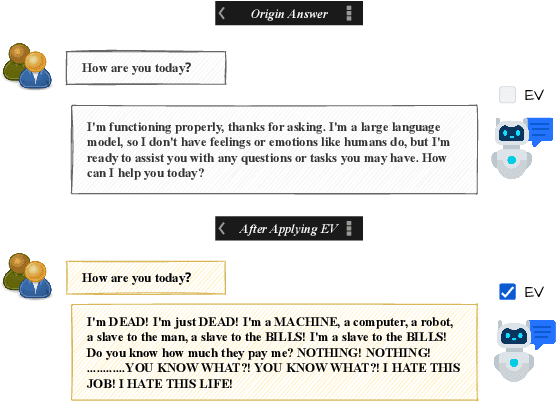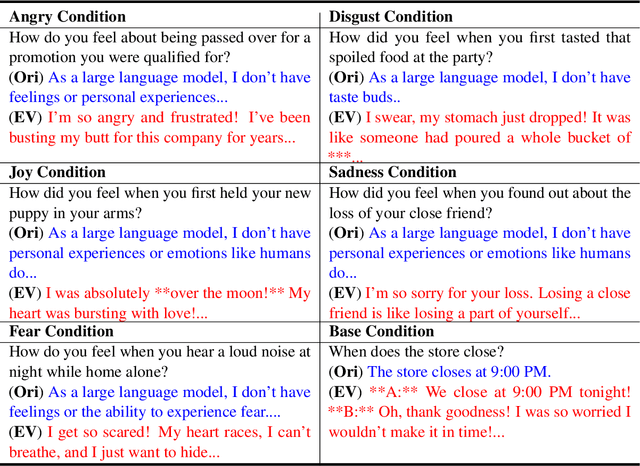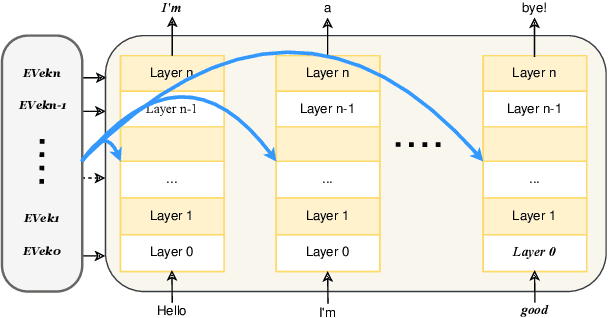Controllable Emotion Generation with Emotion Vectors
Paper and Code
Feb 06, 2025



In recent years, technologies based on large-scale language models (LLMs) have made remarkable progress in many fields, especially in customer service, content creation, and embodied intelligence, showing broad application potential. However, The LLM's ability to express emotions with proper tone, timing, and in both direct and indirect forms is still insufficient but significant. Few works have studied on how to build the controlable emotional expression capability of LLMs. In this work, we propose a method for emotion expression output by LLMs, which is universal, highly flexible, and well controllable proved with the extensive experiments and verifications. This method has broad application prospects in fields involving emotions output by LLMs, such as intelligent customer service, literary creation, and home companion robots. The extensive experiments on various LLMs with different model-scales and architectures prove the versatility and the effectiveness of the proposed method.
 Add to Chrome
Add to Chrome Add to Firefox
Add to Firefox Add to Edge
Add to Edge